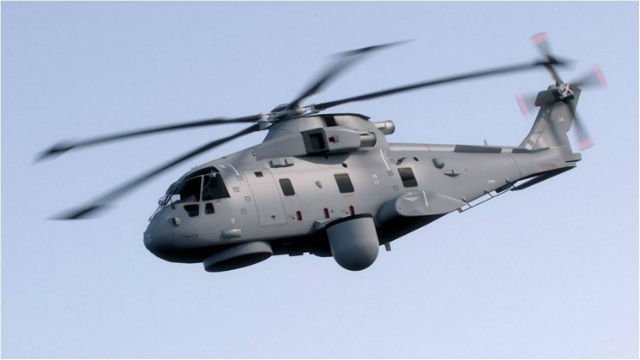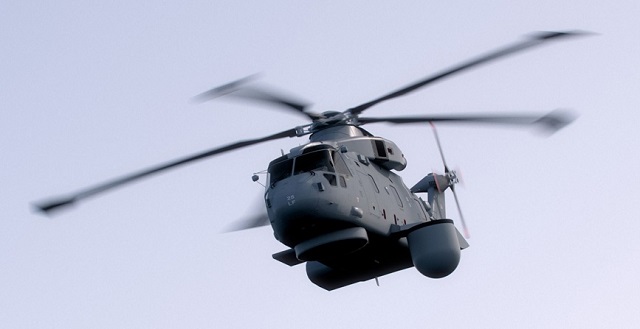 The fleet of Merlin helicopters will replace the Royal Navy’s outgoing
Sea King Mark 7 ASaC force which is fitted with an earlier version of
the Searchwater and Cerberus systems. Picture: Thales
The fleet of Merlin helicopters will replace the Royal Navy’s outgoing
Sea King Mark 7 ASaC force which is fitted with an earlier version of
the Searchwater and Cerberus systems. Picture: Thales |
|||
The Fleet
Air Arm’s Merlin Mk2 helicopter is the world’s most advanced
maritime helicopter, which already provide various functions including
Anti-Submarine Warfare (ASW) and humanitarian duties. Crowsnest is part of the UK’s future aircraft carrier capability, which will deliver two Queen Elizabeth Class Aircraft Carriers and fifth generation Lightning II fast jets to operate from them across the world. "Crowsnest will form an integral part of future carrier operations and act as the Royal Navy's eyes and ears, providing protection through early warning and surveillance," said Air Vice-Marshal Julian Young, Director Helicopters at the MOD’s Defence Equipment and Support organisation. "We have accelerated our programme delivery strategy in order to sustain the capability seamlessly through our Merlin Mk2 helicopters as the Sea King Mk 7 fleet retires from service in 2018, and we are confident that the programme will be delivered as planned." The Thales solution is an updated, improved and repackaged role-fit version of the Cerberus tactical sensor suite currently in service on the Sea King Mk 7 helicopter. The design comprises of a single mechanically scanned radar head which uses an innovative system to provide 360 degree visibility from the underside of the helicopter, and which folds up to the side of the aircraft when not in operation. |
|||
Merlin MK2 Crowsnest: The New Airborne Early Warning Platform For Royal Navy Aircraft Carriers
- Posted On



 The
design comprises of a single mechanically scanned radar head which uses
an innovative system to provide 360 degree visibility from the underside
of the helicopter, and which folds up to the side of the aircraft when
not in operation.
The
design comprises of a single mechanically scanned radar head which uses
an innovative system to provide 360 degree visibility from the underside
of the helicopter, and which folds up to the side of the aircraft when
not in operation.